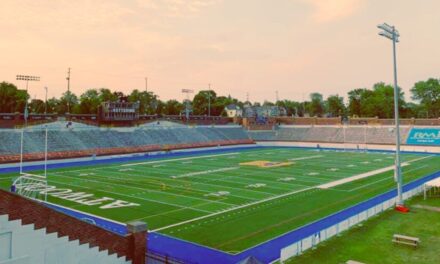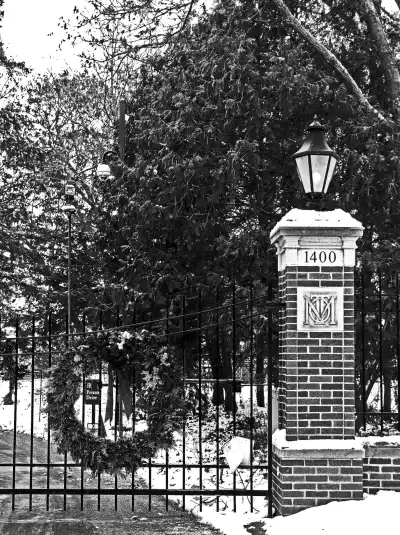By Teddy Robertson
After the University of Michigan-Flint’s pool closure was announced to pool users in late May, I wrote to campus administrators to express my dismay at this decision.
I addressed my letter to Chancellor Laurence Alexander, with copies to Vice-Chancellor for Student Affairs Christopher Giordano, and Recreation Center Director, Julia Stulock.
I wrote as a UM-Flint faculty retiree (1996-2012) and Flint resident since 1984. As a retiree, I use the University Center pool and the strength training area almost daily – a cross-training practice made possible because of the pool.
The university’s Comprehensive Campus Plan public report of September 2024 includes a diagram that proposes renovation of the University Center and incorporation of additional student services to create a Student Activity Hub and development of a section of the Recreation building to “include a wellness and well-being center with counseling and health services.”
This “centralized approach,” according to the report, “would meet the wellness needs of students in one location, making it more convenient and supportive for their overall well-being.”
My concerns are not with student needs or physical renovation. As I wrote in my letter, my concerns lie in two areas: a decision based on a neglected asset (the pool) and disregard of an existing community relationship. I would like to elaborate on these two areas here.
Why is the pool a neglected asset?
The pool closure decision appears based on a resource abandoned post-Covid, but that “abandonment” seems led by administrative choices.
Since re-opening, pool operation hours have decreased, limiting usage by both students and the public. I see no evidence of student-centered programming at the pool, such as credit/non-credit swim lessons, swim/stroke technique, lifeguard training and first aid certifications (always a big community need), and no initiatives to grow student/faculty/staff usage by offering aqua enrichment programs for non-lap swimmers (such as aqua jogging and aerobic exercise). Despite this, the pool’s community-based aqua fitness classes, for example, have grown in attendance and popularity (now over 20 participants per class).
Neglect of pool programming means that planners see the pool area only as a maintenance problem or square footage for other projects like a “Wellness Center Hub,” a current trend in facilities across higher education. A more creative response to assessed UM-Flint needs (and alignment with UM-Ann Arbor’s Healthy Campus model) would embrace innovative use of the unique four-season resource already here. Why destroy a campus and community health resource that can never be rebuilt in present economies?
Speaking of the campus’s pool as a four-season resource, here are some of the advantages of treating it as such:
- Swimming is a survival skill and a first aid skill. Just a year ago, two toddlers drowned in the Flint River, but the UM-Flint pool offers no swim or water safety programs at its “Riverfront campus.”
- Swimming is both a team and individual sport, and a traditional component of recreation services. The health and recreation benefits of swimming last a lifetime, long after team sports become memories. Students who choose UM-Flint choose a Big Ten campus in the Great Lakes region, surrounded by water and water sports.
- Swimming is a crucial option for students with physical or emotional barriers to other sports the Rec Center offers, including planned field sports.
- Water exercise can be the sole accessible option for those with physical health issues like obesity, injuries, or physical limitations.
- Swimming and water exercise support mental health. A Wellness Hub may provide counseling, but students will not be able to experience therapeutic aqua exercise on campus or in the Flint community.
Further, a ready replacement for UM-Flint’s pool does not exist, and the alternative pool options administrators cite ignore the reality.
Private entities like Insight have membership fees that are prohibitively high (Henry Ford Health Club’s fees are even higher) and Insight’s pool is also shallow, designed specifically for therapy and rehabilitation.
The new downtown YMCA is not yet open, will likely have a packed schedule, and does not accept Silver Sneakers (a Medicare health and fitness option). The lack of Silver Sneakers again creates a financial barrier for many Flint residents, or even if one can afford it the nearest Silver Sneakers pool option is now in Lapeer. Lastly, proposed land-based exercises at the Rec Center ignore the existence of similar options available at many senior centers at nominal cost, if any.
A lost community relationship
My experience with the local community that values the UM-Flint pool means that I feel their disregard in the planning process.
An internal digital survey (no longer online) shows a total of 660 responses, of which were cited as from “alumni/community.” But despite initial promises of community engagement, I have seen no outreach to the community of actual pool users – some 300 local residents weekly – through the planning process.
Flint residents know and value UM-Flint through their use of the campus pool at the University center. Decades of community support for UM-Flint recreation programs that use the pool include donors like Maurice (“Bud”) Prottengeier. Prottengeier swam daily until he reached age 100, and his family (wife Marian, children Jan Koop and Greg Prottengeier) have donated several thousand dollars to the Recreation Center, its pool and kids’ programs.
Loss of the university’s pool ruptures a bond of nearly five decades with the Flint community, and Chancellor Alexander’s introductory message to the 2024 Comprehensive Campus Plan alludes to the community reaction to the loss of the pool:
“Much of our existing space was generously gifted to the university. While these gifts are invaluable, we see great promise in redefining these spaces to better meet today’s academic and operational requirements. As we look to the future, it is clear that our opportunity lies not just in managing space but in transforming it. We must ensure that our physical environment supports the dynamic and interdisciplinary work that defines our academic mission.”
The plan uses the optimistic vocabulary of strategic planning: transforming, re-defining, right-sizing, colocating, and re-purposing. But destruction of an underused resource is not visionary; more often it is a last resort. Over the next decade the emergency of student counseling and socialization may peak, the City of Flint may continue to revitalize, and the goals of higher ed and UM-Flint will shift again.
But the campus pool will be gone.
UM-Flint itself, and the creation of its Center and pool, is the product of historic Flint philanthropy working with the university, the City of Flint, and the Michigan state legislature. Economic forecasts suggest that such confluences will not likely repeat in this century. To be a resource for the community, UM-Flint will need large effort to overcome an already-tarnished relationship with the community of tax paying residents who relied on these assets.
So I ask again: please re-evaluate the pool decision.
Editor’s Note: The University of Michigan-Flint pool’s last day of operations is scheduled for today, July 26, 2025.







